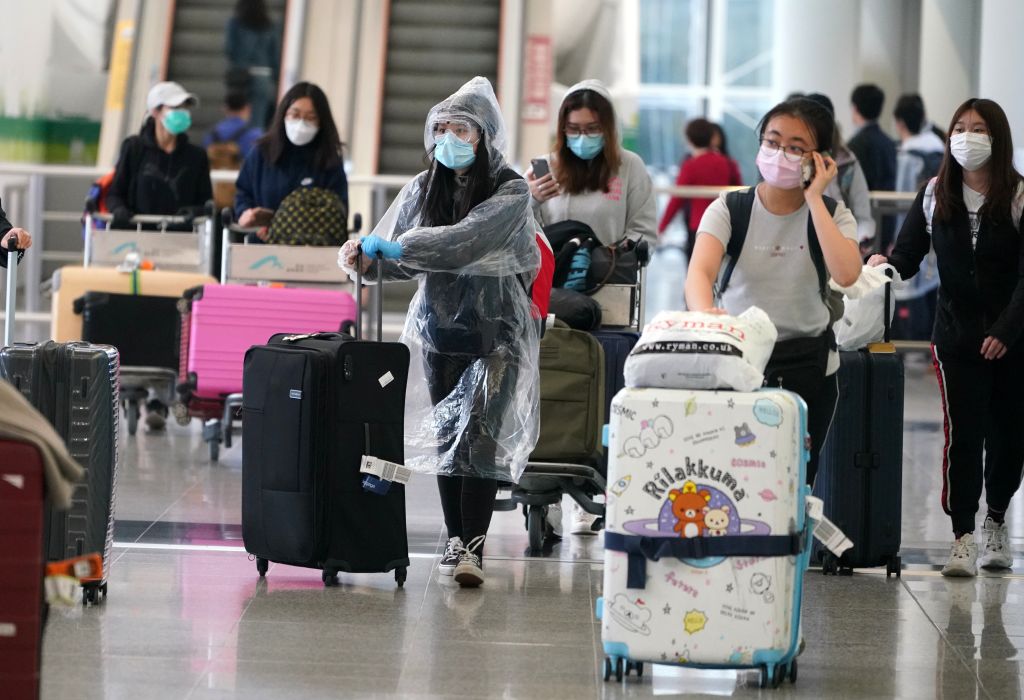China went into lockdown on Tuesday as the number of COVID cases continued to rise, prompting the return of mass testing and hazmat-suited health inspectors to the streets in unprecedented numbers.
As the highly transmissible Omicron form spreads across China, the country’s “zero-Covid” plan is being smashed by 5,280 new Covid-19 cases on Tuesday, more than quadruple the previous day’s total.
China’s two-year-old strategy of relying on strictly localised lockdowns looks to be in jeopardy as Omicron makes its way into towns and cities.
On Tuesday, at least 13 cities throughout the country went into lockdown, with many more following suit in part.
The worst-hit province was Jilin in the northeast, where the National Health Commission reported nearly 3,000 new cases on Tuesday.
Stay-at-home orders have been issued to the residents of various cities, including the provincial capital of Changchun, which has a population of nine million.
While China’s largest city, Shanghai, is under a lattice of restrictions that fall short of a citywide closure, the southern tech capital of Shenzhen is three days into a lockdown with many factories closed and grocery shelves emptying.
The epidemic began in China at the end of 2019, but has since subsided in much of the rest of the globe. In China, again, scenes of neighbourhood closures, panic purchasing, and police cordons are witnessed.
Public venues have increased their examination of the health QR codes as lockdowns are put in place near Beijing.
Mary Yue, a project manager, was quarantined for 21 days with her mother and three-year-old kid after a playground they had frequented was connected to a number of instances of the virus.
“When the health department called, I was terrified. I feared that they would isolate us in a hotel, and I was scared of that,” she stated.
“This time they are allowing individuals to stay in their own homes. The relief is palpable.”
The epidemic continues to go on in China, while the rest of the globe is attempting to return to normal.
A Beijinger named Yan tells AFP that “the control measures were performing very well” before. It is back to square one, and I’m wondering when it will ever stop.
A looming ominousness over the economy
More than 1,000 new cases were reported for the sixth consecutive day on Tuesday in the world’s second-largest economy.
As the virus spreads, experts expect it to have a negative impact on growth.
According to Oxford Economics expert’ Tommy Wu, additional limits, such as the one in Shenzhen, would put pressure on demand and lead to supply disruptions in the near future.
China’s declared GDP growth target of 5.5 percent this year will be “difficult,” he said.
The previous day’s tech-driven selloff was extended Tuesday as Hong Kong stocks fell more than 3%.
According to ANZ bank analyst Raymond Yeung, “The partial confinement of rich regions in southern and eastern China is concerning because they account for half of the country’s GDP and population.”
Flight tracking data shows that dozens of domestic flights at Beijing and Shanghai airports were cancelled Tuesday morning.
According to a spokeswoman, an outbreak at Volkswagen Group operations in Changchun, Jilin, forced the closure of three locations on Monday for at least three days.
In light of the Omicron variant, Zhang Wenhong, a top Chinese medical specialist, has suggested that the zero-Covid policy may be loosened. But he cautioned that any short-term easing of mass testing and lockdowns would be untenable.
During an emergency meeting on Monday night, Jilin’s governor promised to go all-out to “achieve community zero-Covid in a week.”
Works at The Truth International Magazine. My area of interest includes international relations, peace & conflict studies, qualitative & quantitative research in social sciences, and world politics. Reach@ [email protected]










